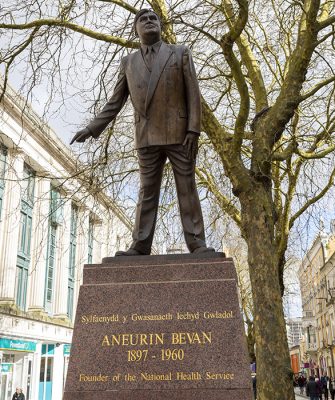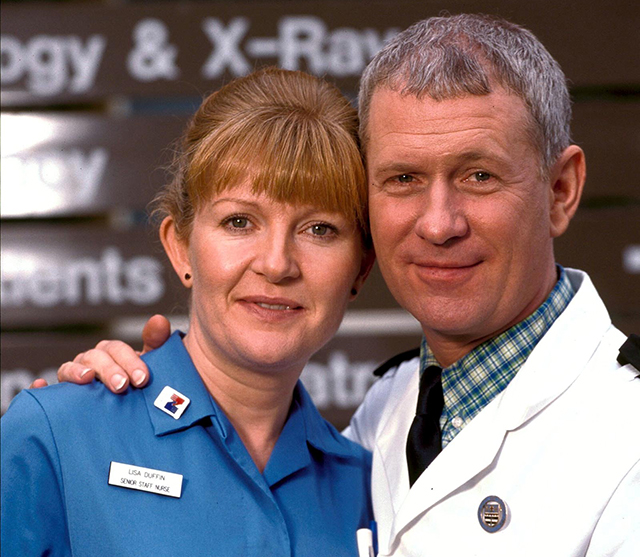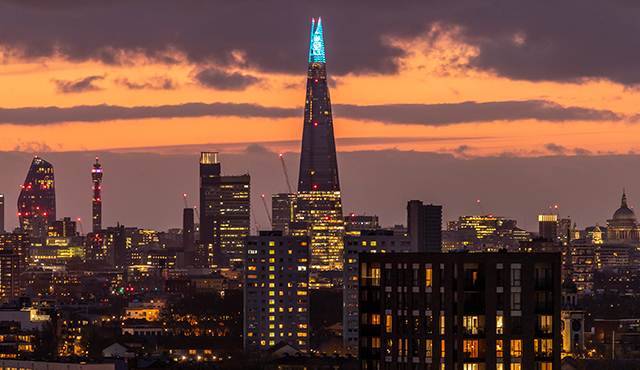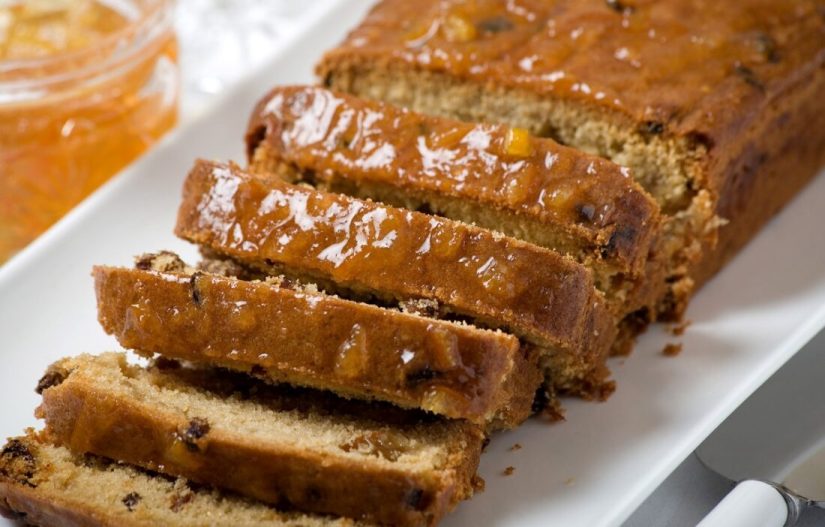 Shutterstock / VH-studio©
Shutterstock / VH-studio©One of the UK’s most beloved institutions, the NHS turns 76 on 5 July, 2024 – so here are 76 NHS facts to celebrate!
The Birth Of The NHS

Statue bronze sculpture of politician Aneurin Bevan 1897-1960 in Queen Street, Cardiff, South Wales Pic: Ian Murray/imageBROKER/Shutterstock
1. NHS stands for National Health Service.
2. The NHS was one of the first universal health care systems established anywhere in the world.
3. The NHS was founded on the ideal that good quality healthcare should be accessible to all, regardless of wealth or income.
4. Welsh Labour Party politician Aneurin “Nye” Bevan is known as the founding father of the NHS, having spearheaded its establishment in his role as Minister of Health under Clement Attlee.
5. The NHS was officially launched in the UK on the 5th of July, 1948.
6. It was “opened” in Park Hospital (now Trafford General), in Manchester, where Bevan symbolically received the keys.
7. The first patient was a 13-year old called Sylvia Diggory, who was admitted with liver problems.
8. Dr Benjamin Moore, a Liverpool physician, was probably the first to use the words ‘National Health Service’, in his 1910 book, “The Dawn of the Health Age”.
9. Before the National Health Service was created, patients were generally required to pay for their care.
10. The original structure of the NHS in England and Wales was established by the National Health Service Act 1946, which received royal assent on 6 November, 1946 – the year after World War II ended.
11. Many doctors were originally opposed to the NHS, preferring to continue working independently. On winning them over, Bevan is famously quoted as saying, “I stuffed their mouths with gold.”
12. A leaflet about the NHS sent to every household in June 1948 stated: “It will provide you with all medical, dental and nursing care. Everyone — rich or poor, man, woman or child — can use it or any part of it. There are no charges, except for a few special items. There are no insurance qualifications. But it is not a “charity”. You are all paying for it, mainly as tax payers, and it will relieve your money worries in time of illness.”
The NHS As An Employer
13. NHS England is the UK’s largest employer, with NHS Scotland coming in a close second.
14. The NHS is the fifth largest employer in the world – behind McDonalds, Walmart, the US Department of Defence, and China’s People’s Liberation Army.
15. The NHS employs roughly 1 in 20 out of Britain’s working population.
16. There were around 1.34 million full-time equivalent staff in the NHS in England as of February 2024.
17. In 2022/23, the total cost of employing the staff in the NHS was £71.1 billion – 45.6% of the NHS budget.
18. GPs and GP practice staff are not now directly employed by the NHS but are indirectly funded through a complex contract system.
19. The NHS has been Britain’s largest employer since 1961, when it overtook the National Coal Board to claim top spot.
20. The NHS’ first national strike occurred in 1973, with ancillary staff – the worst paid and most marginalised section of the workforce – protesting about poor pay.
21. In order to keep up with the demands of staffing, the NHS has long been a big adopter of part-time roles and recruiting overseas. By 1955, the Ministry of Health had official recruitment campaigns in 16 British colonies and former colonies.
22. On 22 June, 1948, HMT Empire Windrush arrived in the UK, carrying over 1,000 passengers from the West Indies – many of whom would go on to be employed by the new NHS.
23. Doctor numbers were up 24% and nurses up 22% over the five years to July 2023.
24. Nurses are the largest single group of professionally qualified staff in the NHS, with 306,000 employed in English hospitals and community health services as at December 2020.
25. The NHS has one of Britain’s most varied workforces, with employees from a diverse range of backgrounds in terms of class, occupation, gender, race and nationality.
What Does Our Healthcare Cost In The UK?
26. In 2022, the UK spent 11.3% of GDP on health – just above the average for comparable countries.
27. A recent study estimated that in 2022/23, the average 10-minute face-to-face GP consultation cost £56.
28. In 2022/23, the estimated average cost of a patient taken to A&E by ambulance was £417.
29. Ambulance call outs that didn’t result in a trip to A&E cost an estimated average of £287.
30. The cost of an operation varies enormously but, for example, in 2024/25, an emergency appendix removal operation for a child without complications cost, on average, £3,603.
31. In 2024/25, the average cost of an emergency coronary artery bypass graft without complications is £14,547.
32. For someone who attends an urgent care centre and receives the lowest level of investigation and treatment, the average cost in 2024/25 is £91.
33. For an individual at a major A&E department who receives complex investigation and treatment, the costs range on average from £137 to £445.
34. As of 2024, patients were paying between £26.80 and £319.10 for dentistry services – many of which are no longer covered by the NHS.
The NHS In TV, Film And Culture

Duffy and Charlie (Cathy Shipton and Derek Thompson), iconic characters from Casualty Pic: Alexander Caminada/Shutterstock
35. The UK drama Casualty, which is set in an A&E department, was first broadcast in 1986 and has since become the longest running medical drama in the world.
36. Welsh actor Michael Sheen portrayed Aneurin Bevan in National Theatre production about his life, “Nye”, written by Tim Price, in 2024.
37. The launch of the NHS was feted with three public information films that were screened nationwide in 1948: Charley: You’re Very Good Health (Halas & Batchelor, 1948), Here’s Health (Douglas Alexander, 1948), and Doctor’s Dilemma (Unknown, 1948).
38. Emergency – Ward 10 was the UK’s first NHS hospital-based soap opera. First broadcast in 1957 on ITV, it ran until 1967, and followed the life and loves of the staff and patients of the fictionalised Oxbridge General.
39. Three films from the “Carry On” franchise are based on or in the NHS: Carry On Nurse (Gerald Thomas, 1959), Carry On Doctor (Gerald Thomas, 1967) and Carry On Matron (Gerald Thomas, 1972).
40. In recent years, fly-on-the-wall style reality TV shows based in hospitals, such as 24 Hours in A&E and One Born Every Minute, have become popular.
41. Petula Clark was nominated for Best Supporting Actress at the 1951 BAFTAs for her role in White Corridors, one of the first films set in an NHS hospital.
A Timeline Of NHS Innovation
42. 1956 saw the first immunisations for polio.
43. 1956 also saw the first kidney dialysis performed by Frank Parsons at Leeds General Infirmary, marking the opening of the first artificial kidney unit in the UK.
44. The whooping cough immunisation programme began in 1957.
45. The first implantable heart pacemaker was used in 1960.
46. In 1962, the first full hip replacement was carried out by Professor John Charnley at Wrightington Hospital in Wigan.
47. 1968 saw the introduction of the measles vaccine, as well as the first transplants of the heart and liver.
48. CT scans were introduced in 1972, followed by MRI scans in 1980.
49. Britain’s first ever purpose-built AIDS ward was opened in 1987, at the Middlesex Hospital, by Princess Diana.
50. In 1988, free breast screening was introduced to reduce breast cancer deaths in women over 50 – the first of its kind in the world.
51. The NHS Organ Donor Register was established in 1994.
52. In 2000, the first NHS Walk-In Centres were introduced.
53. The introduction of robotic arm in 2007 leads to ground-breaking heart operations for patients with fast or irregular heartbeats.
54. St James’s Institute of Oncology, the largest cancer centre in Europe, opened in Leeds in 2007.
55. In 2013, the Cancer Drugs Fund was established, creating a national list of approved fast-track drugs giving uniform access to treatment across the country.
56. 2017 saw NHS England announce the world’s largest single PrEP implementation trial to prevent HIV infection.
57. In 2019, NHS England struck a world-leading deal to enable everyone with Hepatitis C to receive curative treatment at a cost-effect price, which will enable England to eliminate it before 2030.
58. In 2020, the UK was gripped by the COVID-19 pandemic. By December that same year, 90-year-old grandmother Margaret Keenan became the first person in the world to receive a COVID-19 jab outside of a clinical trial.
59. Also in 2020, the NHS became the first health system in the world to commit to become carbon net zero.
60. In 2022, NHS staff were honoured with the George Cross by Her Majesty The Queen at Windsor Castle.
The NHS’s 75th Birthday Celebrations

The Shard, London, lit up in blue for the NHS Pic: Shutterstock / mikecphoto
61. The NHS celebrated a marquee year in 2023 for its 75th birthday.
62. 150 buildings and historic sites across the UK went blue to mark the NHS’s 75th anniversary – among them, The Shard in London and Salisbury Cathedral.
63. 185,015 people took part in Parkrun events marking the occasion.
64. The NHS website hosted stories from staff as part of it 75-year milestone, showing the diversity of both roles and its workforce.
65. The NHS Big Tea has become an annual event on 5 July, encouraging people to come together to raise money for NHS Charities Together. The Prince and Princess of Wales, who are the charity’s patrons, organised a special NHS Big Tea party at St Thomas’ Hospital, London, for NHS staff and volunteers to mark the 75th birthday in 2023.
More NHS Facts: Numbers, Events & Milestones
66. The NHS deals with over 1 million patients every 36 hours.
67. In 2017, a Commonwealth Fund Report ranked the UK first for healthcare system performance.
68. On average, 45,000 people each day visit major hospital A&E departments in England.
69. The waiting list for hospital treatment rose to a record of nearly 7.8 million in September 2023.
70. The NHS launched its first website in 2007.
71. With over 48 million visits per month, nhs.uk is the UK’s biggest health website.
72. £1bn funds the NHS across England for 2.4 days.
73. On an average day in 2023, nearly 35,000 people would call 999.
74. Pre-pandemic, GPs were conducting around 3 million telephone appointments a month, but during the pandemic it is estimated that the number peaked at 11 million, in March 2021.
75. The number of beds available in the NHS has more than halved over the last 30 years, from around 300,000 to around 142,000.
76. The NHS’s blue and white logo is one of the most recognised brands in the world.
Sources
The King’s Fund | NHS | Wikipedia | Twinkl | ITN | The Commons Library | Community Pharmacy England | NHS Identity
Feeling inspired? Check out our NHS story starter
Our Health section has all sorts of expert advice and tips to help keep you feeling your best!




